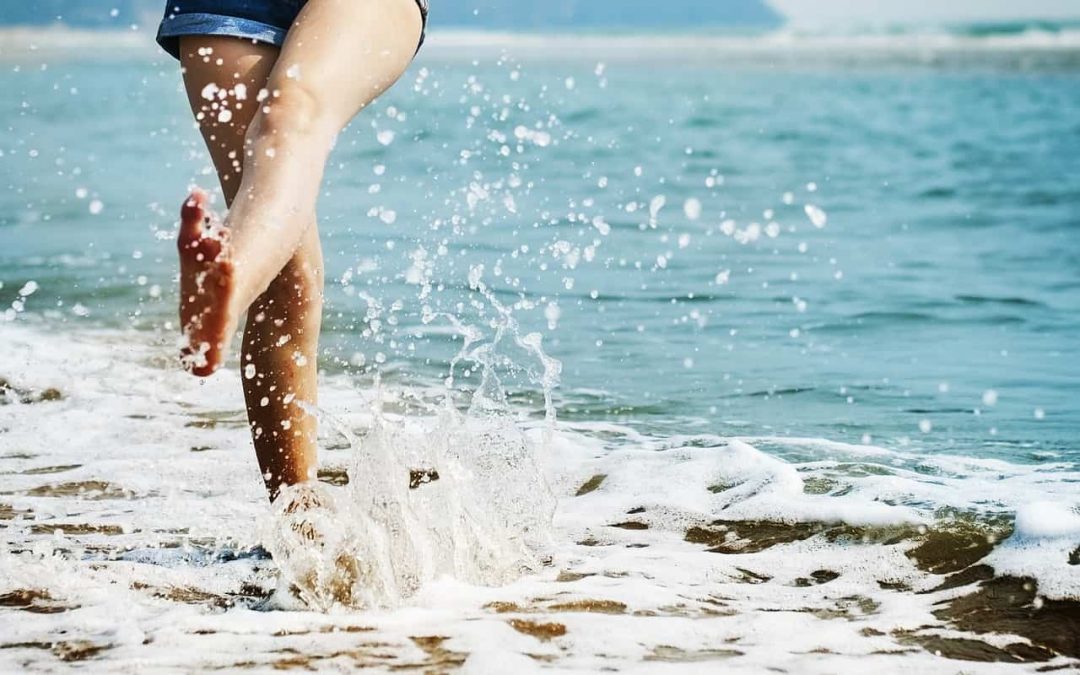Are Your Feet Summer Ready?
With the winter months behind us, we will hopefully be able to pack away our boots and woolly socks and get our feet back on show. Now, does this fill you with fear or will you be sandal proud? Be brave, take a peek at your feet to see what needs to be done to get them summer ready. Neglected feet are not a pretty sight and they may also affect your health.
To help you get (and keep) healthy feet, here are top “to do’s”, and also what to be careful of:
1. Get Rid of Dry Hard Skin
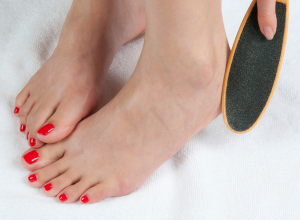
File hard skin with a foot file for soft feet
Hard skin is not only unsightly but is also less able to stretch so is at risk of cracking and getting infected.
Buy yourself a pumice stone or foot file to gently buff away the dry skin.
Some people prefer to buff after bathing/foot soak whilst others like to buff the skin whilst dry. Try both and see what works best for you.
2. Moisturise, Moisturise, Moisturise
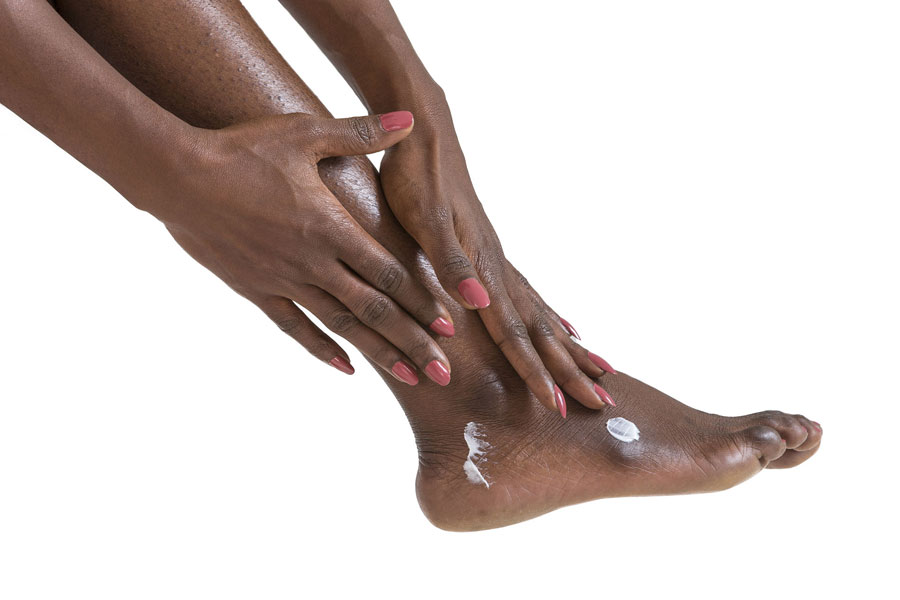
Moisturise with foot cream to soften callus hard skin
Did I mention moisturise?!
The skin is the largest organ of the body and helps with protection. To function properly it needs to be supple and produce enough natural moisturising factors (NMFs) to keep the skin lubricated. The skin can get dry for a number of reasons such as medical conditions (eg diabetes, hypothyroidism, eczema) dehydration, medications, walking barefoot or wearing backless shoes.
Applying regular cream will help to keep the skin soft and reduce the risk of unattractive callus and painful cracked heels. Whilst we may put cream on our bodies, we tend to stop at the ankles and forget gfabout our poor hard working feet! Do your feet a favour and dollop on the cream.
The best foot creams are not necessarily expensive. Look for creams that contain urea (yes I did say urea… this is one of the bodies NMFs) glycerol or lactic acid (eg CCS, Flexitol, Gehwol). These help to hydrate and cover the skin with a protective film to trap in moisture.
Apply after bathing when the feet are still a little damp, paying particular attention to the heels (be careful you don’t slip on the floor). If your feet are particularly dry you could apply the cream at night, cover with a slightly damp sock and then place a dry sock over this (so a double sock technique). Keep on overnight.
Try not to get cream between the toes as this can increase the risk of fungal infections.
Can’t Reach Your Feet?
If no one else can apply it for you then use a spray cream or try this little trick… put some cream on a tray or plate and then move your feet around on it.
Step onto a towel to blot off any excess.
3. Pedicure
These can be done at home or at a local spa/nail salon. If you were concerned about hygiene at salons or if you prefer a more medical procedure then consider going to a podiatrist and having a medical pedicure. Podiatrists have to work to strict professional standards and so will use single use or sterilised instruments and you will benefit from their expertise.
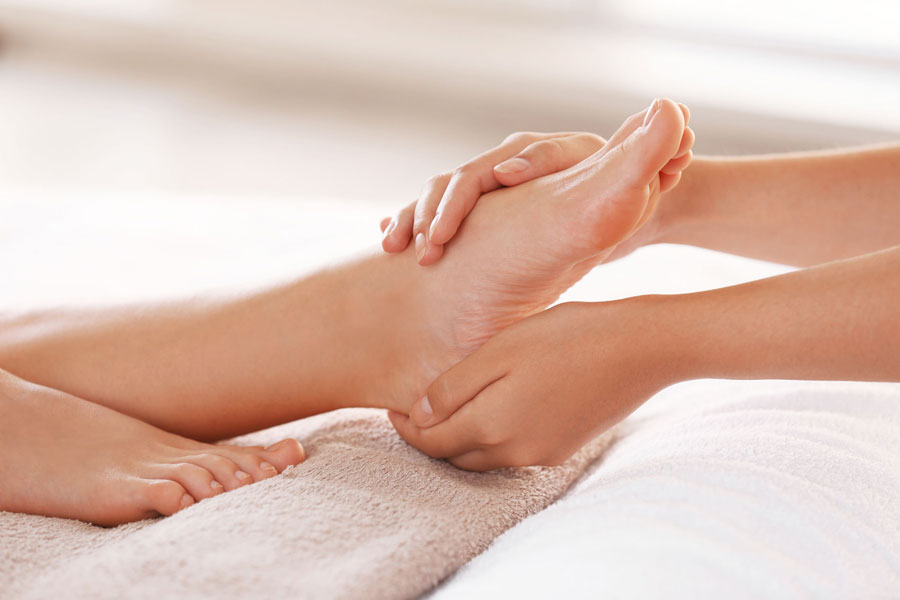
Look after your feet, treat them to a pedicure
For home treatment:
- First soak your feet in lukewarm water and pat dry (you could add an emulsifying lotion to the water)
- Use an orange stick to gently clean under nails
- Cut nails straight across and gently file the edges. Do not cut nails too short or clip into the corners as this can increase the risk of painful in-growing nails.
- Do not be tempted to cut or push back the cuticles. Cuticles help to keep the nail unit enclosed to prevent dirt entry and they also protect new nail growth.
- Nail polish can instantly beautify the nails and jazz them up when wearing sandals or if chilling poolside! They can also help to cover up discoloured fungal nails. However, continued use of nail polish can stain the nail so apply a clear base coat and don’t wear it all the time.
4. Unattractive Or Damaged Nails
We aren’t all lucky enough to have beautiful feet. Our feet work hard and can be subjected to damage or infection. If you are embarrassed to show your feet because of infected, damaged, unattractive nails then there may be an option for you.
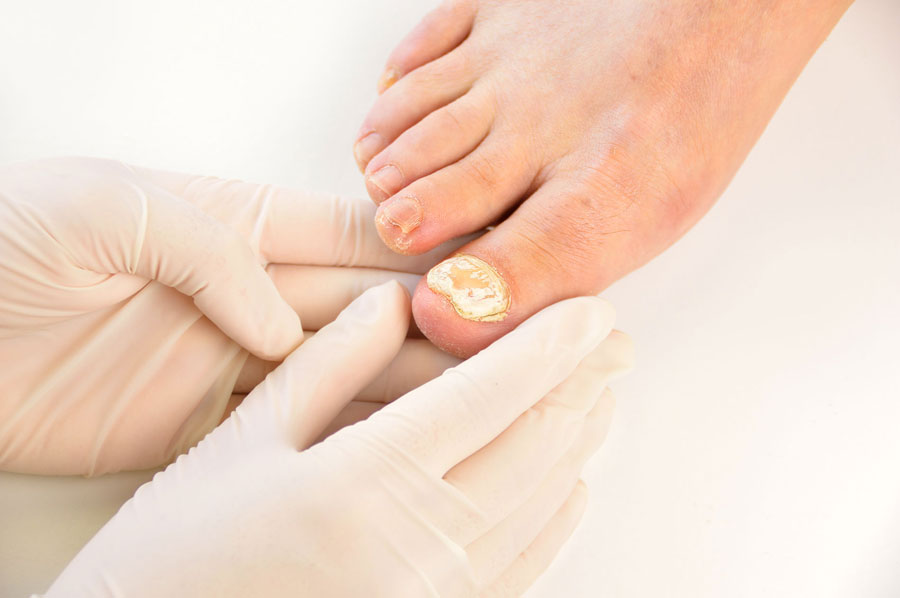
Nail reconstruction can improve the aesthetics of damaged toenails
Some podiatrists are trained to do toe nail reconstruction which will give you feet that you will be happy to show off. This is a cosmetic toe nail correction using a specially formulated elastic U.V. gel used to reconstruct, reshape and improve the appearance of fungal, thickened and damaged nails.
The gel system is specifically designed for toenails and can only be offered by foot care specialists trained in its use. The results can be quite remarkable!
Please click here for available treatments for summer ready feet

Reshape & improve the appearance of your toenails with toenail reconstruction – available at FootSmart Podiatry
Once your feet are ready to brave the world, look after them and keep them looking beautiful!
Be Aware of the Following
1. Footwear
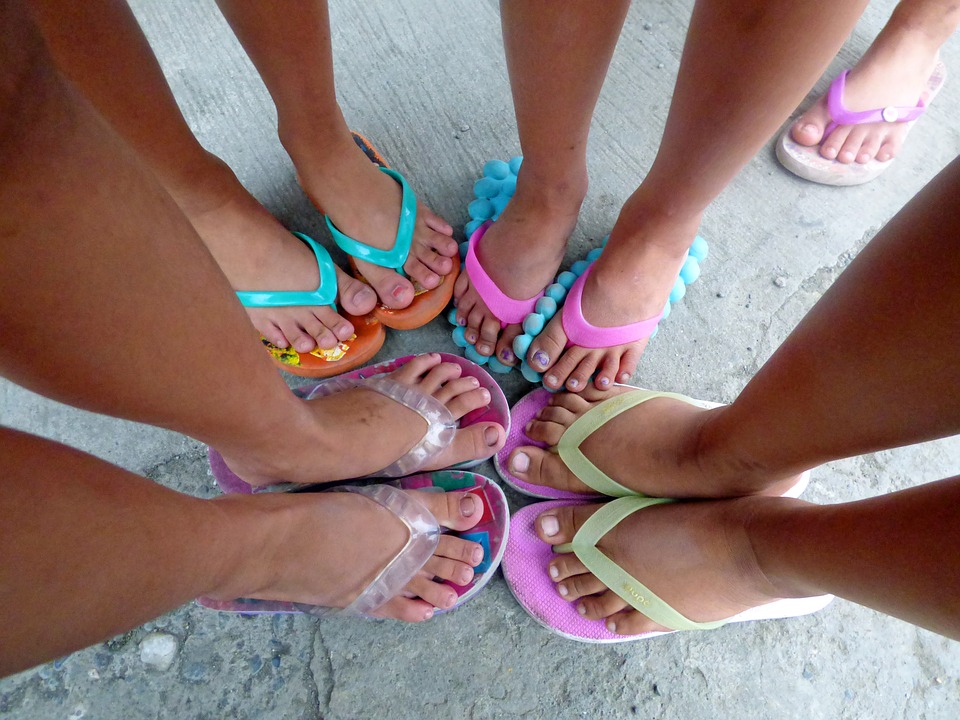
Summer flip flops
Wearing flat shoes and flip-flops provide no or little arch support which may put strain on your feet and cause pain. It is quite common for people to develop plantar fasciosis following a change to summer footwear. I recommend you alternate different styles of footwear so that super flat shoes aren’t the main shoe type being worn.
2. Fungal Infection
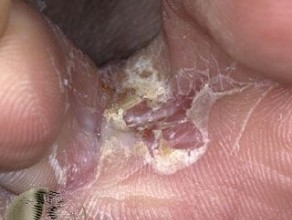
Fungal foot infection athletes foot between toes
Hot weather can result in hot feet! Did you know that the soles of your feet contain more sweat glands per square centimetre than any other part of your body?
Now whilst that may be a pretty amazing fact, what’s not so pretty is that sweaty feet are more prone to fungal infections.
Fungal foot infections can look a bit yukky and drive you itch crazy, and if the skin gets broken they can sting and develop bacterial infection. So although fungal foot infections are really common it is probably best to treat them to prevent them getting worse or spreading to other people.

Althletes foot – no thanks. Athletes body – yes please!
This can be done quite easily so don’t worry!
Basic advice would be to alternate footwear allowing them to dry our between wear, try to keep your feet as dry as possible, don’t share towels with other family members and go get some anti-fungal treatment advice from your local pharmacist.
There are many products available over the counter and include powders, creams and sprays.
Discover more about athletes foot here: dermnetnz.org/topics/athletes-foot
3. Cracked Heels
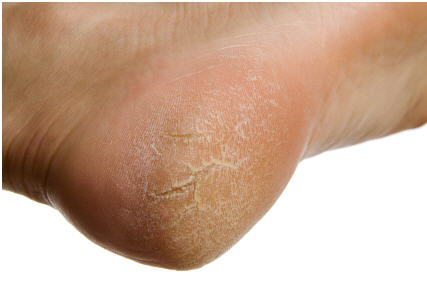
Cracked heels & hard skin feet fissures can be helped by moisturising
Wearing open backed shoes such as sandals and flip flops can dry out the skin, rub around the edges of the heel and cause callus build up.
Dry skin is less elastic so can crack and cause fissures which can be painful and get infected.
Keep your skin supple by moisturising regularly and filing off dry skin with a foot file or pumice stone.
If the skin is very hard and cracked, go visit your local friendly podiatrist!
4. Blisters
We all know how painful these little blighters can be! Blisters are often caused by friction which results in layers of skin separating and filling with fluid.
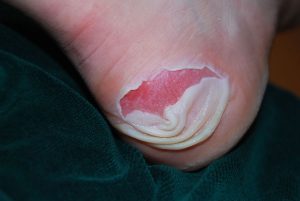
Cover blisters with a plaster or dry dressing to prevent infection
Flip flops can rub between the toes and not wearing socks with shoes means getting a blister is more likely.
The ‘red spot’ is a warning that you are at risk of getting a blister. When the area stings, it means the skin layers have already been forced apart.
If you do get a blister and it is not bigger than 5mm then it is best to NOT pop them as this increases the chance of getting an infection.
If the blister bursts then it is advised to cover them with a plaster or dry dressing.
5. Don’t Forget The Sunscreen

Protect your feet & help prevent skin cancer by using sunscreen
Don’t make this mistake – so many people forget to apply a good SPF to their feet and end up with burnt feet and increased risk of skin cancer.
See the following link for more information: www.foothealthfacts.org/article/sunscreen-on-your-feet
6. Diabetes
People with diabetes need to be super careful of their feet, especially in summer when it is tempting to wear sandals and walk around barefoot.

With diabetic neuropathy you may not be aware of foot injury
Diabetes can reduce healing and can also cause peripheral neuropathy (numbness and loss of sensation to the bottom of the foot) which means they are less likely to feel any injury such as shoes rubbing or stepping on a stone or piece of glass.
It is advised to always wear appropriate footwear and to check feet daily for injury. Any wound should be cleaned, covered and promptly checked out by a podiatrist or GP if severe or not healing within 3-4 days.

